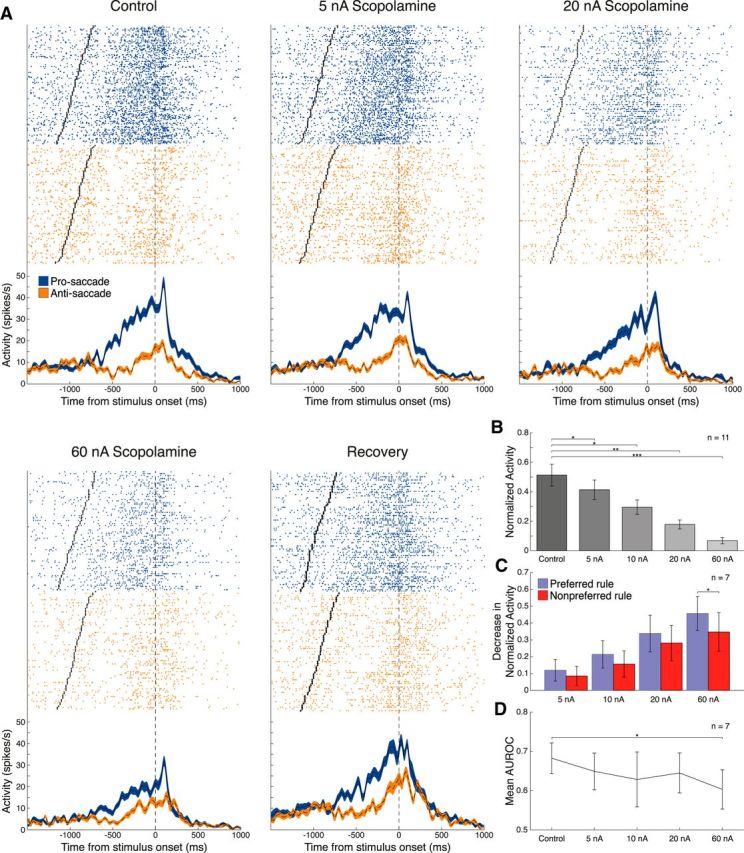Figure 3.

Effect of scopolamine on neuronal firing and task selectivity is dose-dependent. A, Single-neuron spike rasters (top panels) and smoothed spike density functions (bottom panels) for pro-saccade (blue) and anti-saccade (orange) rule trials for control, 5, 20, and 60 nA scopolamine, and recovery conditions. Rasters and spike density functions were aligned to stimulus onset. Each row of dots represents a trial raster, and each dot represents a spike. AUROC values are 0.91, 0.89, 0.89, 0.84, and 0.85, respectively. B, Normalized mean FRs for 11 neurons in which incremental doses of scopolamine were tested. Higher doses of scopolamine led to greater inhibition of FR, compared with control (5 nA, p = 0.042; 10 nA, p = 0.0098; 20 nA, p = 0.0020; 60 nA, 0.00098). Sample includes recorded neurons with scopolamine doses of 5, 10, 20, and 60 nA. C, Decrease in normalized FR for preferred and nonpreferred rule trials of 7 neurons with significant rule selectivity, as determined by AUROC analysis, and given the aforementioned dosing regimen (60 nA, p = 0.016). D, Mean AUROC values during the range of scopolamine doses applied. At 60 nA scopolamine, mean AUROC is significantly attenuated, compared with control values (60 nA, p = 0.047). Error bars indicate SEM. *p < 0.05, **p < 0.005, ***p < 0.001 (Wilcoxon signed rank test). FRs were normalized as described (see Materials and Methods).
